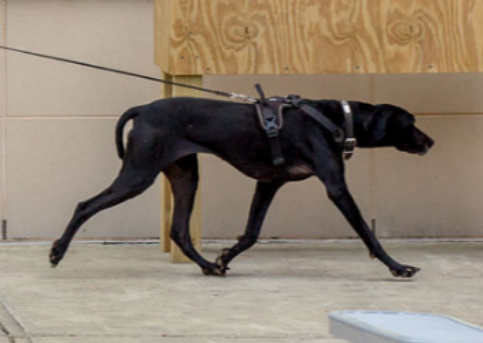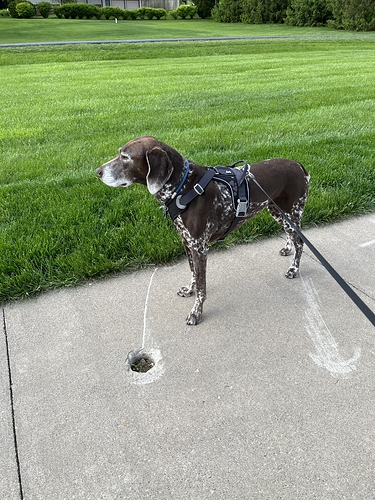Take a look at your dog, imagine scenarios when you want to use a grab strap, and think about how you’d prefer a grab strap to be positioned.
I’ve seen them set on in different ways. That makes for different dynamics for pulling/lifting different parts of the dog. Horizontal across, or vertical/length-wise following the spine. Set at the shoulders, or set further back behind the shoulders.
In addition, the way the harness is designed beneath the chest affects what happens when you pull or lift. Some tighten around the rib cage, which does get the dog’s attention. Some are designed for lifting the dog’s front end better than others.
Also, I’d suggest that talking with a professional trainer who uses such harnesses for dogs similar to yours would likely be invaluable.
I had a reasonably well-behaved, but sometimes-implusive, 75 lb labrador. He had leash training so that he wasn’t a puller. That work was all done before I discovered harnesses with a grab strap.
What was hard to control were certain stimuli that had him bolting forward before a training thought had time to enter his brain. His inner super-adrenaline pump was set way too high. That’s when I wanted to grab the strap and lift his front feet off the ground while we re-established a thinking dog brain.
I preferred a length-wise strap positioned to first lift the shoulders. The length-wise was easier for me to grab. A horizontal position would have been instantly beyond a quick grab.
Also we sometimes played in the surf for a few days every year, and I wanted to be able to easily snag the strap and get him up to the surface of the water, if he lost his common sense while trying to get something off the bottom of the sea. He was that kind of dog for total determination. 
 . Would like something with a grab strap on the back.
. Would like something with a grab strap on the back.






